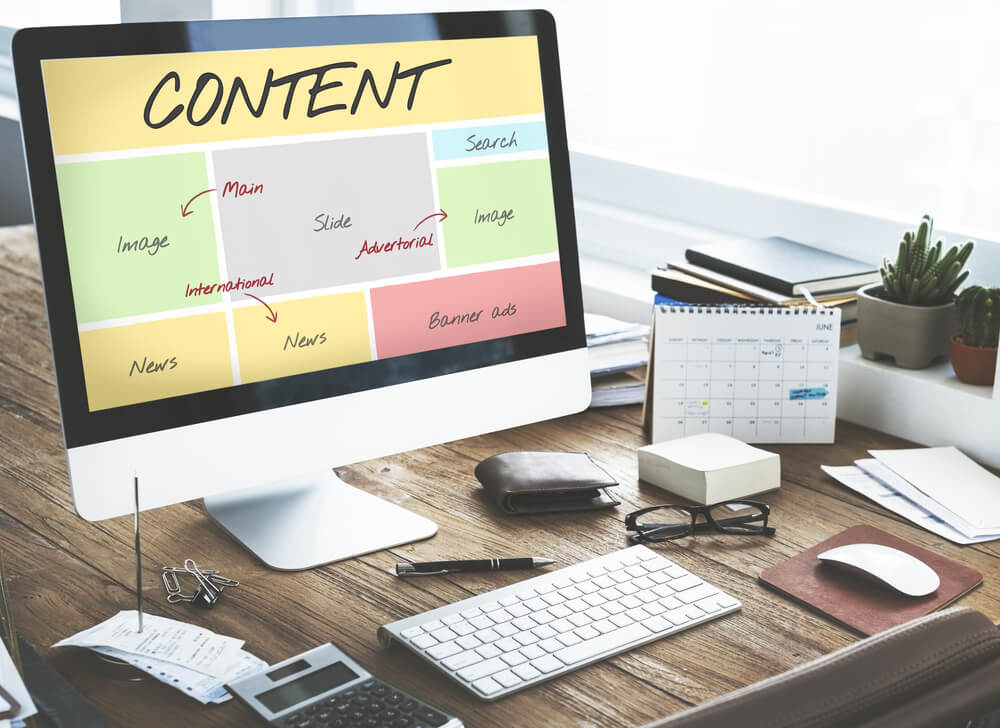
Ultimate Guide to Email Send Best Practices
Time and time again we see that email marketing is a very successful marketing tactic. In fact, when looking at ROI and engagement, email can be a powerhouse addition to your business, especially when you use email send best practices effectively:
- Emails have 50 to 100 times higher click-through-rates when compared to Facebook and Twitter.
- For every $1 marketers spend on email marketing, they receive $42 in return
This is why businesses who start using email marketing effectively will keep using it as a key strategy in their toolkit and look for ways to expand their efforts through automation.
If you’re just starting or being tasked with managing an email marketing program, you may be starting to feel the pressure. There are so many elements to keep track of and measure to get a campaign just right. Never fear! By putting these email send best practices to good use, you’ll feel like a pro and see results in no time.
14 Email Best Practices
1. Start with a Basic Strategy
We know it can be exciting to get your first send off the ground, but take two steps back before jumping in. Create a plan of attack for the type of emails you want to send, how often they should be sent, and the type of content that will be in them so that you can start sending at a regular cadence. This will stop you from getting in the trap of sending sporadically or whenever something comes up, which can be bad for your list health.
If you’re not sure where to start or that you have enough content to send as often as you want, this is the perfect time to plan. Lay out a realistic schedule for now and set goals to build up frequency. It’s better to start small than to overpromise and underdeliver.
2. Build Your Email List
This always seems like the hardest part but it’s actually one of the easiest after it’s been set up. If you have opt-in forms on your site currently and you’re not seeing a good number of signups (and your website traffic is good) it’s time to review and optimize to create a signup form that converts.
Make your opt-in forms work for you! They should be unavoidable and, no, we don’t mean a frustrating-to-close pop-up, but if the only way to sign up for the list is through a pop-up then that is not enough. Make sure if a user lands on the site and moves around the site they can still easily see the super awesome mailing list sign up.
Most ESPs, including SharpSpring, will not allow you to upload purchases lists. Especially with the growing number of privacy policies and data management rules, uploading a list of contacts that you do not have explicit consent from can end in costly fines. Best practice is to always build lists organically.
Reminder: Your website needs to be receiving consistent traffic to also see consistent sign ups. If your website traffic isn’t very high, you won’t be able to add to the list quickly. Think of using other marketing channels like social media to help promote the list.
3. Say Hello to New Subscribers
Every email strategy should include a welcome campaign for new subscribers. How many email lists have you subscribed to only to forget because you didn’t receive a single email until 3 weeks later? Your customers should not be having the same experience.
Email is not billboard or ad marketing. Email attempts to build a 1:1 relationship between the brand and the customer. These prospects trusted you enough to hand over the keys to their inbox. Greeting them with a welcome email creates familiarity and trust.
This can be a single email that simply says hi or a series of emails that helps to introduce your brand, your products, and maybe even offers a discount. How simple or intricate a welcome series is will depend on what fits the brand’s needs. Using a revenue growth platform opens the doors to new opportunities to connect with your customers through welcome series that are specific to their interests and more. Sign up for a SharpSpring demo today to find out how to upgrade your customers’ experiences from the first interaction.
4. Segment Your Lists
78 percent of marketers say list segmentation is a marketing automation feature they can’t live without and we completely understand why.
There are many ways to create segments for targeted marketing based on the data you’ve collected. What did they purchase lately? Where do they live? Which pages on your site they visited most recently? All these touchpoints are opportunities to fine-tune the customer journey and start offering them exactly what they are looking for.
Of course, the limits of your segments are based on the data points you are collecting. Using an integrated marketing tool will allow for tracking of more touchpoints and creating more automated campaigns around those. That is why many marketers are turning to all-in-one marketing automation tools to grow their email marketing.
5. Know the Laws
Email is not the wild west, though it may feel like it sometimes! There are policies around collecting and storing people’s personal information. You may have heard of GDPR or CAN-SPAM, but with Apple Mail’s Privacy update and CCPA in California, ignoring the rules can end up being costly.
It’s important to understand what to do in order to be compliant before starting to collect email addresses. Looking at other businesses might not be the best option unless you know they are a reputable sender. Because email, unlike social media channels, is largely managed by individuals on websites, it is very common to see examples of brands not following the rules.
It will also be important to stay up to date on these policies for any changes. Usually, your ESP will inform their users of any changes. However, it is still up to you to implement those changes across your sign-up forms and emails in order to stay compliant.
6. Test and Experiment
A/B testing has always been standard practice for optimizing emails once you have a list of a few thousand subscribers or more. Testing is how email marketers know whether one subject line is better than another or which day of the week gets the best engagement.
There are so many ways to start testing beyond the subject line. Seasoned email marketers know that testing for content and engagement can be a game-changer. Marketers can test for which button colors get the best clicks, whether customers prefer reading about a topic or clicking through to an explainer video, and even if they respond better to images or copy.
7. Decide on Key Metrics in Advance
Set reporting goals and Key Performance Indicators (KPIs) in advance. This will not only help make reporting a breeze once a campaign is over, but it also helps marketers look for optimizations to make along the way.
Deciding KPIs in advance gives marketing teams a specific goal to work towards and ultimately push them to create better emails. If marketers understand the goals of the campaigns, whether that’s raising product awareness, clicks to a landing page, or form fills, they can use their tactics and creativity to guide people to taking the desired actions.
Take time to set up your marketing dashboards with these metrics in advance so that the data can be applied as soon as it starts populating.
8. Don’t Take Unsubs Personally but Don’t Ignore Them Either
High unsubscribe rates don’t necessarily mean that customers hate your business, but they can signal other issues that should be addressed. Rising or higher than average unsubscribe rates can point to customers receiving too many emails or emails they feel are irrelevant to them.
Test an adjusted content strategy and watch to see if rates improve. Also, don’t be afraid to ask! Survey your readers on what their ideal frequency would be to gain some real insights.
9. Create a Holiday/Event Strategy
We all know that Q4 sneaks up fast and the holiday season can be madness for all types of industries. If you’re just starting to incorporate email into your marketing, make sure that you account for any additional emails or special campaigns that will need to be created for national, local, and business holidays and events.
Using automation here can be key to landing huge sales throughout the season. From abandoned cart emails to lead nurture campaigns after a new product release, talk to us to find out how automation has been a powerhouse for businesses.
10. Quality not Quantity
Email fatigue is real and it’s one of the main things that affect your sender status. If subscribers are getting too much email, they might unsubscribe or worse, they’ll ignore you until you start hitting the spam folder.
Start slow and test how your audience responds by watching engagement rates and unsubscribes. Don’t forget to count any automated campaigns that are running. If someone is in the middle of a drip campaign that sends daily updates for 7 days, it’s good practice to keep them off the mailing list until they’ve completed it to avoid mailing them too heavily.
11. Reward Your Most Engaged Contacts
Create segments for your VIP contacts. These can be contacts that interact with your emails the most often, attend the most webinars, or have purchased the most. Special campaigns can be sent to these lists to nurture the relationship. These rewards don’t have to be discounts but they can be. Rewards can be first look at new releases, asking their opinion on a new product offering, or insider content.
Bonus points if your email software offers lead scoring. Those scores are an easy way to segment your most die-hard customers.
12. Use Data to Personalize the Customer Journey
Long gone are the days of “Hey [FNAME]!” as an effective way to get opens and clicks. Personalizing data fields is still a tactic smart marketers keep in their toolkit, but personalization has evolved.
Besides first name and birthday, marketing teams are using location, behavioral, demographic data to personalize the customer journey. Retail sites thrive off of this type of marketing. As consumers, we’re all familiar with the experience of viewing something at our favorite retailer only to receive an email a day later with the item and others similar to it in our inboxes.
This new world of personalization is utilizing data to present customers with the messaging they’re looking for when they’re looking for it. By combining data with automation, marketers are giving customers a more streamlined journey and a friction-free journey means more sales. That’s why data and automation are taking over the way we do email.
13. Coordinate Cross-Channel Campaigns
Often, marketing channels get treated as disconnected tools when they are all tools meant to work together to build business. Use email as another tool to leverage promotion of social media events or Lives. Social media and other channels can also be used to grow your email list. Your social media followers are not necessarily your email subscribers. Grab them in both places so they’re less likely to miss a message.
14. Use an Email Presend Checklist
If you’ve ever had to send a “Oops, sorry about our last email…” subject line, then you know the pain of missing something before hitting send. The best way to combat send button anxiety is to have an email presend checklist handy every time before you hit “send.”
Kickstart Your Email Marketing
Email can be trickier than it seems, but with the right tools and support getting a strong email marketing strategy off the ground doesn’t have to be! Give these tips a try and discover how well-executed email marketing can help push your company in the right direction toward meting your revenue goals.





